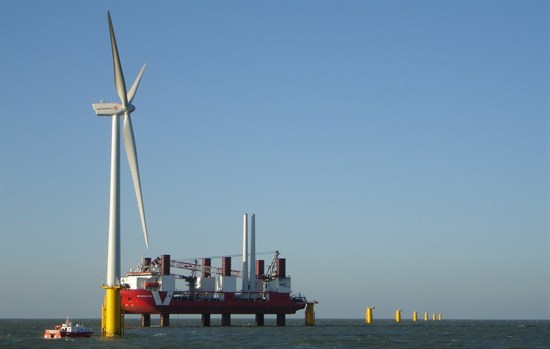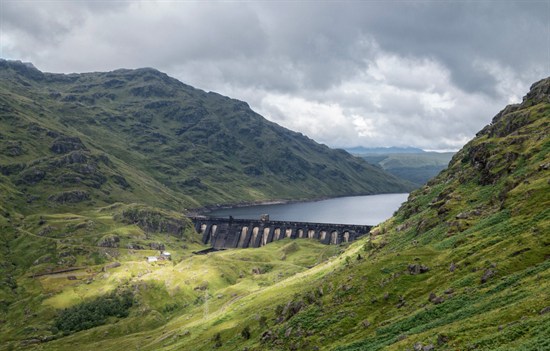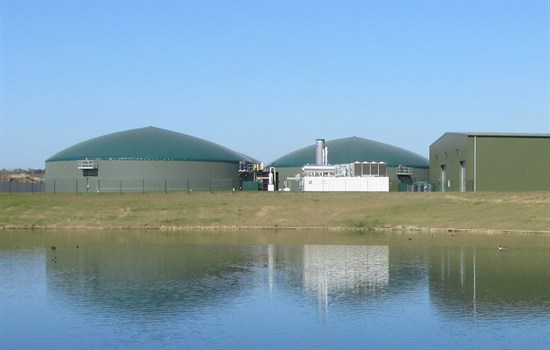Where does renewable electricity come from? You’re probably thinking about wind turbines and solar panels. But in the UK, that’s only half the story.
To find out why, join us for our third dive into the government’s annual energy data, DUKES, published last week. Parts one and two covered the challenge of decarbonising the UK and changes in UK gas supply and demand.
In part three we show – among other things – that rotting rubbish tips generated more electricity in 2013 than hydropower or solar panels. In a series of pictures we’ll show you the hidden faces behind the past, present and future of UK renewable electricity.
UK renewable electricity is growing fast
Renewables generated 54 terawatt hours of electricity in 2013, 15 per cent of the UK total. That’s enough to supply 11 million average homes with all their electricity for a year, almost half of all UK homes.
Renewables’ share of electricity generation has more than doubled since 2010, when 6.8 per cent came from renewables. You can see how fast renewable electricity output (purple line) is growing in the graph below. But fossil fuels (blue lines) still made up 65 per cent of the total in 2013.

Source: DUKES Table 5.5
So what makes up that 15 per cent share?
Wind is the king of UK renewables, now and in future
First off, those familiar wind turbines – supported by most of the public but hated by some. These are the undisputed king of UK renewable electricity generation. Most of the UK’s onshore capacity is on the hills of Scotland, including Whitelees near Glasgow (pictured), the UK’s largest onshore windfarm. It opened in 2009 and helped onshore wind electricity output double in the five years to 2013.

Source: CC2.0 Scottish Government
In 2013 windfarms were responsible for about half of total renewable electricity output with 30 per cent coming from onshore wind and another 20 from offshore wind, as the graph below shows.

Source: DUKES table 6.1.1
Offshore wind is a relatively recent phenomenon. It is harder to build and connect to the grid, so it is about 50 per cent more expensive than onshore wind. But it avoids some of the visual impacts of turbines on hills and is being supported by government.

Source: CC2.0 Wessex Archaeology
Thanet offshore windfarm (above) was completed off the Kent coast in 2010. It’s one reason electricity output from offshore wind is now more than six times higher than it was in 2009.
Biomass burning is big and growing bigger
Burning biomass like wood or straw in conventional power stations is the second biggest source of renewable electricity today, after wind power. It is a huge, industrial-scale activity. Not so much logs on the fire as trainloads of woodchip replacing coal.
The UK’s largest coal-fired power station Drax (pictured) is now also the UK’s single largest producer of renewable electricity. It burns millions of tonnes of wood, mostly sourced from North America.

Source: CC2.0 FireStationKind
Drax plans to convert more of its capacity to burn woodchips that it will store in huge, specially designed domes. It has been in dispute with government over subsidies for the conversion but will probably go ahead either way.
The environmental impacts of burning biomass are disputed too. It may save large amounts of carbon, or it may be worse than burning coal. It all depends where the wood comes from. The lack of clarity over subsidies and environmental impacts explains why there’s a large question mark over how much biomass will be burnt for electricity in 2020 (see graph, below).
Renewable electricity from rotting rubbish is stagnant
Coming in third on the renewable electricity league table is landfill gas. What’s that? When biodegradeable material like food waste is buried in landfill sites it starts to rot, releasing methane. This can be captured and used to generate electricity in gas turbines like the ones at the top of the page.
This is probably the biggest surprise entry on the renewables league table. But it won’t keep its podium place for long. Almost all of the potential to capture landfill gas is already being exploited. The amount of electricity generated from landfill gas is expected to stagnate out to 2020 while other sources surge ahead, as the graph below shows.

Source: DUKES table 6.1.1, Carbon Brief analysis of DECC’s renewable energy roadmap and electricity market reform delivery plan.
That’s because we are sending less rubbish to landfill as recycling increases. More councils are collecting food waste too.
Hydopower, not running away with it
The graph above shows that DECC expects hydroelectric power – number four in the renewable electricity league – to face a similar story of low or no growth.
Small-scale schemes on fast-flowing rivers are becoming increasingly common around the UK, but contributed less than 15 per cent of hydroelectricity in 2013. Most still comes from massive dams like Sloy near Loch Lomond, pictured below.

Source: CC2.0 Marc
Solar is surging ahead, but how fast?
In 2013 solar power ranked below both hydro and landfill gas, producing a measly 3.8 per cent of the UK’s renewable electricity. But it won’t stay there for long. DECC expectations for solar vary widely in 2020, as the graph above shows. Even on the lowest trajectory solar should overtake hydro and landfill gas.
Predicting the future of energy is hard. Solar’s trajectory has proved particularly difficult to plot. Deployment has consistently outstripped government expectations because costs have fallen faster than it thought they would.
Faster deployment means a rising subsidy bill. DECC says that’s why it has cut subsidies for solar farms, pictured below, though others claim the move was politically motivated. More solar farms are likely to be built despite the change but it’s hard to say how fast.

Source: CC2.0 Toyota UK
Different kinds of renewable electricity from rubbish
Another surprise entry in the renewables league table is energy from waste, sneaking in just behind solar with 3.7 per cent of the total. Some waste in the UK is burnt in incinerators, politely referred to in the industry as ‘energy from waste plants’.
Burning the biodegradable portion of household waste produces renewable electricity in the same way as landfill gas is considered renewable. That’s because the trees that made the paper and plants that made the food will grow back in time. Here’s a space-age incinerator in Marchwood near Southampton.

Source: CC2.0 GrahamAndDairne
A growing number of incinerators have been in the pipeline, but the technology remains highly controversial. One long-planned plant in Norfolk was recently cancelled and the prospects for the industry are uncertain.
The future looks rosier for anaerobic digestion (AD), even though it certainly doesn’t smell sweet. AD takes waste – anything from sewage sludge to food scraps – and ferments it in sealed, oxygen-free tanks to produce methane.
Electricity output from AD has grown as fast as onshore wind over the past five years, though from a much lower baseline. It could double again by 2020, the graph above suggest. So plants like the one pictured below could become an increasingly familiar sight.

Source: Agrivert
Slipping below the waterline
Coming in last on the renewable electricity league table are tidal and wave power. The UK is ideally placed to exploit these with its long coastlines, large tidal ranges and location on the rim of the Atlantic where waves are larger.
Despite these natural advantages and DECC claiming the UK is a world leader in the area, UK marine renewables produced just six gigawatt hours of electricity in 2013 – enough for 1,200 homes. Wave and tidal devices are at the experimental or demonstration stage, like the Pelamis P2 pictured below.

In 2020 DECC expects marine renewables to have ramped up their output more than 15-fold to 100 gigawatt hours. However, this remains an insignificant fraction of renewable electricity as a glance at the graph above shows.
So there you have it. Wind is and will be the UK’s number one renewable electricity supplier for the next few years. Our waste supplies a surprising 16 per cent of the total through landfill gas, incinerators and AD. And there are high hopes for solar, but even at the very top of the range of expectations it will contribute less than a fifth of the total in 2020.

